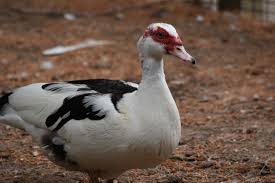Duck Section

About Ducks
Ducks have been domesticated as pets and farm animals for more than 500 years. The domestic duck (Anas platyrhynchos domesticus ) or domestic mallard is a variety of mallard that has been domesticated by humans and raised for meat, eggs, and down feathers. A few are also kept for show, as pets, or for their ornamental value. Almost all varieties of domesticated ducks, apart from the domestic Muscovy duck (Cairina moschata ), are descended from the mallard.
Ducks are not famous for their flying prowess but have strong short wings that allow them to fly. Not every duck that is capable of flight flies. Since migration or extreme danger usually prompts ducks to fly, ducks in captivity or domestic ducks have no reason to fly. They are protected from danger and extreme cold in winter. We know wild ducks for their impressive flying feats. When ducks migrate, they fly long distances to warmer areas during their yearly winter migration. Not every wild duck is capable of flight. The Falkland steamer duck has wings so short it is unfit for flying. Furthermore, popular species of ducks, such as Mallard Ducks, go through a molting season each year which prevents them from flying. This period of time, usually about a month, can also make ducks vulnerable to predators.
Ducks diet
Ducks o the farm are fed a commercially prepared age appropriate food as their main diet. The ducks are provided with vegetables and fruits to supplement the diet. Zucchini, peas, leafy greens, corn, cracked corn, vegetable peels, non-citrus fruit and worms are fed the duck at the farm on a daily basis.
Statistics
| Description | Quantity |
| Drake(males) | 4 |
| hen(female) | 14 |
| Ducklings | 10 |
| Eggs | 0 |
| Total | 28 |